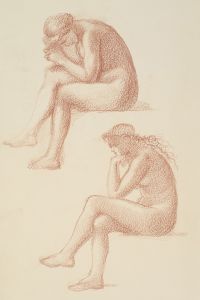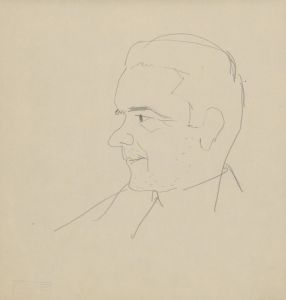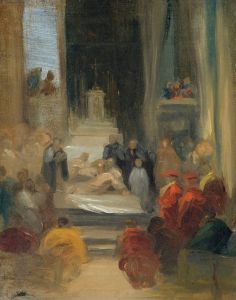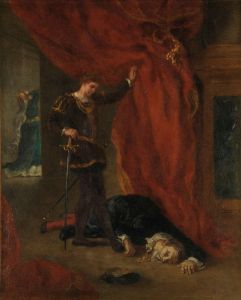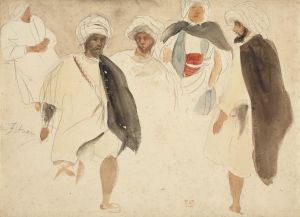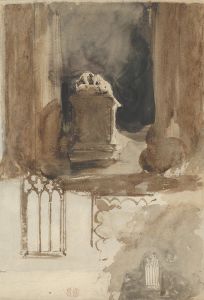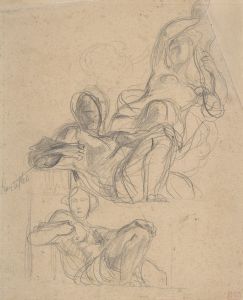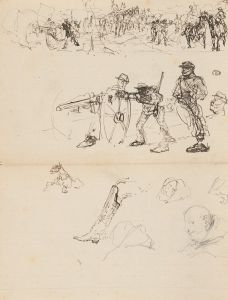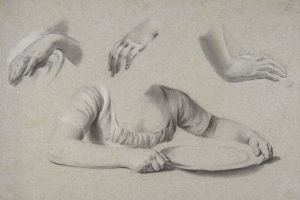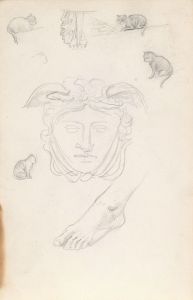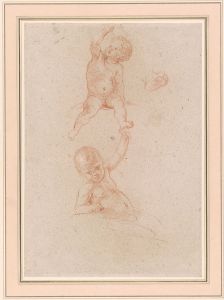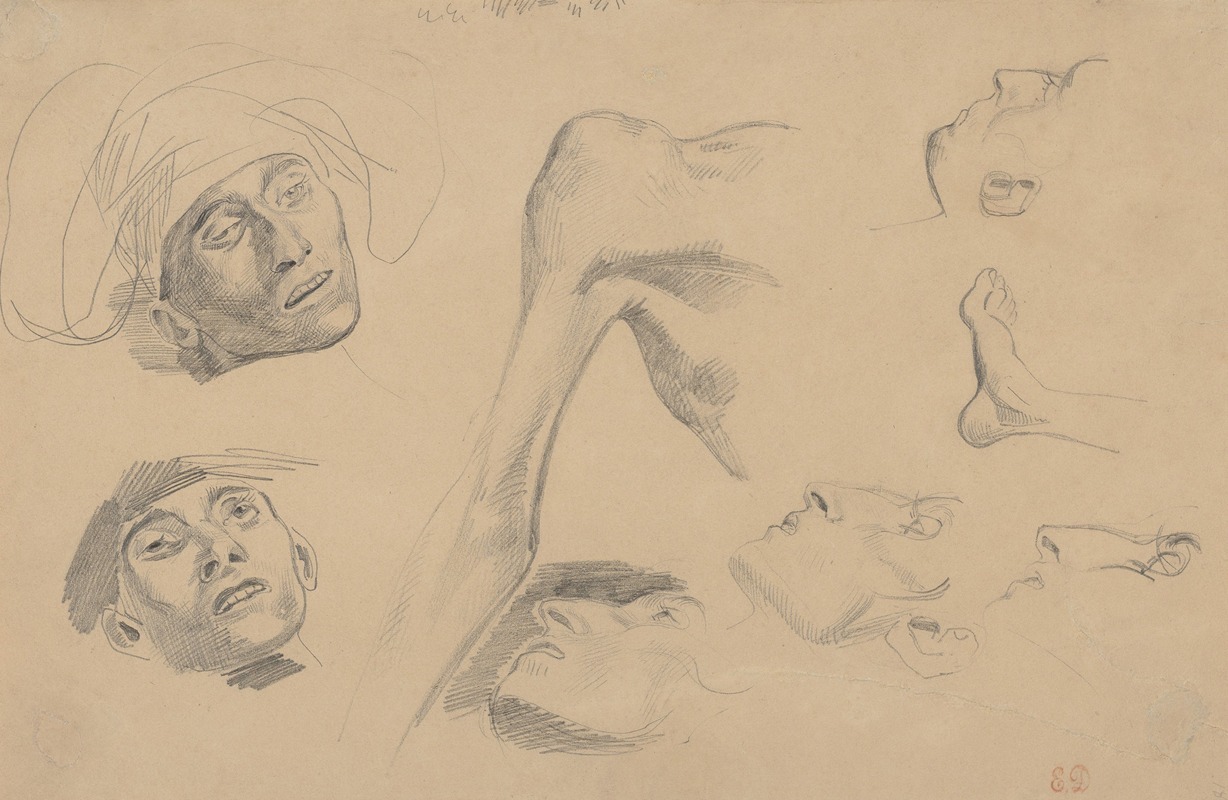
Head, Shoulder, and Foot, Studies for ‘Scenes from the Chios Massacres’
A hand-painted replica of Eugène Delacroix’s masterpiece Head, Shoulder, and Foot, Studies for ‘Scenes from the Chios Massacres’, meticulously crafted by professional artists to capture the true essence of the original. Each piece is created with museum-quality canvas and rare mineral pigments, carefully painted by experienced artists with delicate brushstrokes and rich, layered colors to perfectly recreate the texture of the original artwork. Unlike machine-printed reproductions, this hand-painted version brings the painting to life, infused with the artist’s emotions and skill in every stroke. Whether for personal collection or home decoration, it instantly elevates the artistic atmosphere of any space.
Eugène Delacroix's Head, Shoulder, and Foot, Studies for ‘Scenes from the Chios Massacres’ is a preparatory study created by the French Romantic artist in the early 1820s. This work is associated with Delacroix's larger and more famous painting, The Massacre at Chios (1824), which depicts the tragic events of the Chios Massacre during the Greek War of Independence. The study is a testament to Delacroix's meticulous approach to composition and his dedication to accurately rendering human anatomy and emotion in his art.
The study consists of detailed sketches of a head, a shoulder, and a foot, each rendered with precision and attention to form. These elements were likely intended to help Delacroix refine the poses and expressions of the figures in his final composition. The Scenes from the Chios Massacres painting portrays the suffering and devastation experienced by the Greek population of Chios, who were subjected to mass killings, enslavement, and other atrocities by Ottoman forces in 1822. Delacroix's preparatory studies, including this one, were instrumental in capturing the physical and emotional anguish of the victims.
Delacroix was deeply influenced by the Romantic movement, which emphasized emotion, drama, and individual expression. His studies often involved careful observation of live models and classical sculptures, enabling him to achieve a balance between realism and dramatic effect. In Head, Shoulder, and Foot, Studies for ‘Scenes from the Chios Massacres’, the artist's focus on anatomical accuracy and expressive detail reflects his commitment to conveying the human cost of the historical event.
The study is typically executed in pencil or chalk, mediums that Delacroix frequently used for his preparatory works. These materials allowed him to experiment with shading, texture, and form before committing to the final oil painting. While the study itself is not as widely recognized as the completed painting, it provides valuable insight into Delacroix's creative process and his ability to translate individual elements into a cohesive and impactful composition.
Today, The Massacre at Chios is housed in the Louvre Museum in Paris, where it remains one of Delacroix's most celebrated works. The preparatory studies, including Head, Shoulder, and Foot, are often studied by art historians and enthusiasts to better understand the artist's techniques and his approach to depicting historical events. These studies are considered important components of Delacroix's artistic legacy, showcasing his skill and the depth of his engagement with his subject matter.





